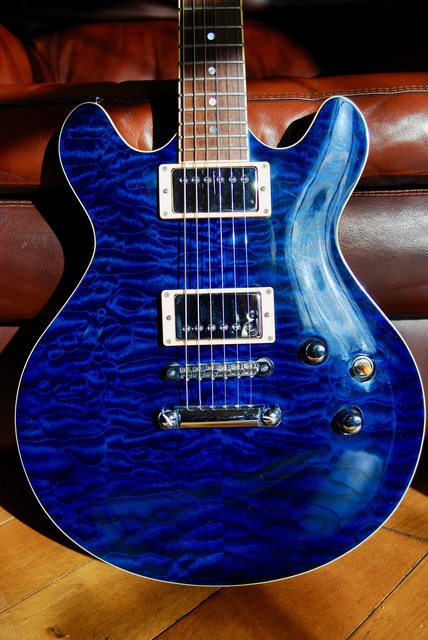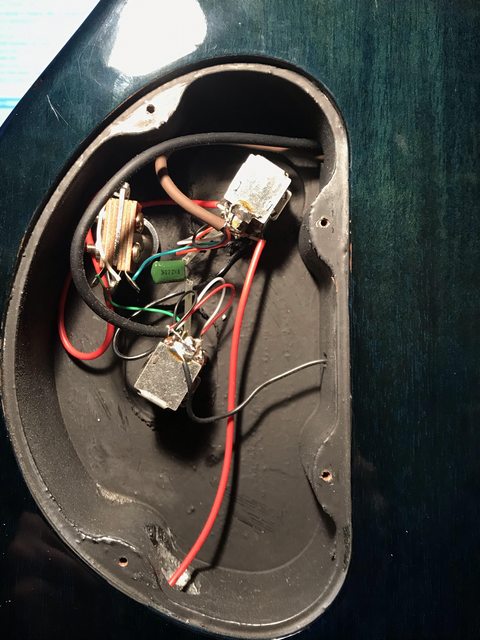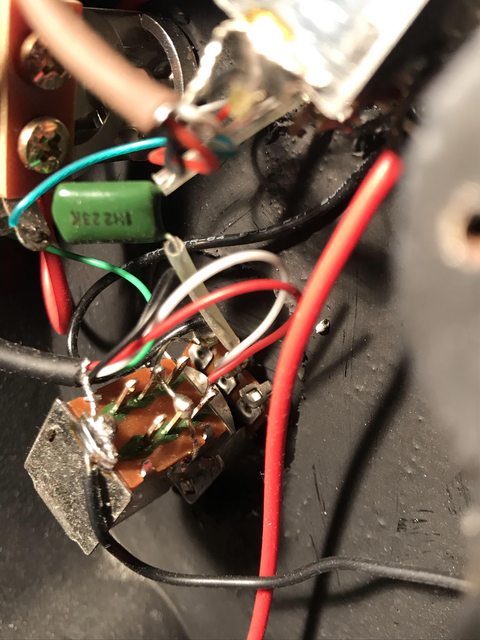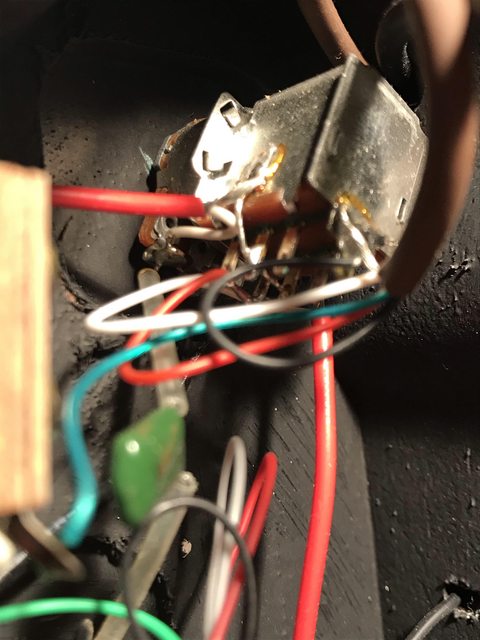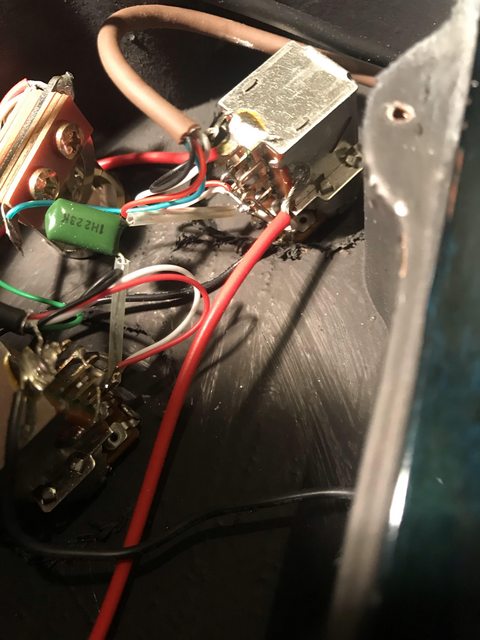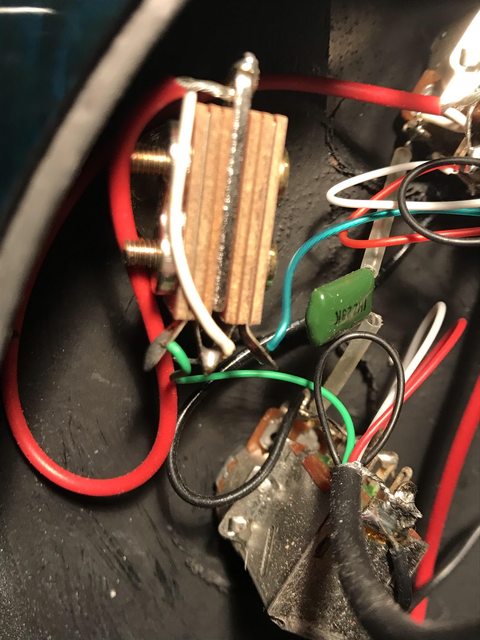I own two of these guitars, so should know the answer.. 
The Love Rock 2 has two humbuckers, one master volume control and one master tone control. Each of these is a push-pull type.
Is the functionality:
1) The master controls are push-pull - with each one splitting one humbucker into single coil mode ?
or
2) One push-pull control switches both humbuckers into single-coil mode and the other reverses the phase between the front and rear humbucker ?
or
3) One push-pull control switches both humbuckers into single-coil mode and the other changes the pickups from working in series to working in parallel ?
I thought the answer was 1) above, but after reading something elsewhere suggesting otherwise - I sat and worked the switches through all permutations to the point where Im not sure I can trust my ears any more
Can anybody confirm exactly how the controls on this model work ?
The Love Rock 2 has two humbuckers, one master volume control and one master tone control. Each of these is a push-pull type.
Is the functionality:
1) The master controls are push-pull - with each one splitting one humbucker into single coil mode ?
or
2) One push-pull control switches both humbuckers into single-coil mode and the other reverses the phase between the front and rear humbucker ?
or
3) One push-pull control switches both humbuckers into single-coil mode and the other changes the pickups from working in series to working in parallel ?
I thought the answer was 1) above, but after reading something elsewhere suggesting otherwise - I sat and worked the switches through all permutations to the point where Im not sure I can trust my ears any more
Can anybody confirm exactly how the controls on this model work ?




